- Home
- Gerald Durrell
The Aye-Aye and I Page 5
The Aye-Aye and I Read online
Page 5
Later in the morning, the zoo phoned us to say that they were ready to house the babies and that, to our delight, Joseph Randrianaivoravelona was to look after them. He was one of the first Malagasy students to come and train with us in Jersey and so we knew our boisterous cohort would be in good hands.
Many years ago, it had become abundantly clear to me that the captive breeding of endangered species could best be done in their country of origin. The snag was that in most of these countries no one had been trained in this delicate art and so no one could undertake it. This led us to found our International Training Centre in Jersey in a property adjacent to our zoo. Here, students are taught the day-to-day process of animal husbandry as well as the basic principles of conservation and ecology. Some students are paid for by their governments and others are given scholarships by us. After training with us, they take their expertise back to their own countries and, with our help, set up breeding colonies of their endangered fauna. The scheme has been an enormous success and, as I write, 282 students from 65 countries have benefited from the training. One of the spin-off benefits is that the course brings together so many different nationalities and makes the students aware that their particular country is not alone in having the worry of, say, inadequate funds, an implacable bureaucracy, an unsympathetic government, or a population which thinks that the only good animal is a dead one, the only good tree is a felled one. This gives them an important sense of camaraderie and this daisy chain of students around the world no longer feel so isolated. To encourage them to keep in touch, we publish a newsletter especially for our students, called Solitaire (another extinct bird like the dodo), so that they may hear of the problems and progress of other students. It seemed singularly appropriate that Joseph, one of our first Malagasy trainees, should look after our rare collection.
Our training scheme was the first step in the right direction but much more needed to be done. Where were we to set up our breeding colonies in the countries of origin? At first, the obvious answer seemed to be the local zoos. Most zoos around the world were in a pretty dilapidated and seedy condition, through poor funding and sometimes lack of expertise. If these institutions could be brought up to a high standard, then there was no reason why they should not become vital and important links in a chain of captive breeding efforts around the world. Where, however, was the vital money for renovations to come from?
It seemed to me, pondering the problem on an earlier trip to Madagascar, that a great many rich, well-organized zoos in the world were interested in the unique Malagasy fauna and would be willing to assist in its conservation, and that these wealthy institutions could well afford to pay to help their less fortunate colleagues. Together with Lee and my faithful and far-sighted team in Jersey, I worked out a formula which seemed to fit the bill. Firstly, we should set up a group, and each zoo that wanted to join should pay a set annual fee. The accumulated funds should be spent on putting the local zoo back on its feet, helping with expert advice, training staff and rebuilding or renovating cages.
Secondly, after a few years, when the zoo concerned was on its feet and functioning well, the members of the group and the zoo itself would set up joint breeding programmes for the endangered animals of Madagascar. There was one important condition. The animals and their progeny bred at zoos outside the country should remain the property of the Malagasy Government and could be recalled by them at any time. In the accord that we signed with the Malagasy authorities, we invented this stipulation as a safeguard because many countries felt that outsiders were only interested in grabbing the fauna and running, as it were, and did not have the best interests of the country at heart. Our clear statement of intent was meant to give confidence and to show that in no way would we exploit the country’s zoological heritage.
Naturally, when we launched the plan, many zoos showed great interest but in others we were faced with the hysteria of zoo directors with a stamp collector’s mentality who could not contemplate a policy of acquiring animals they did not own. However, there was a sensible quorum of directors and zoos who were intelligent enough to see the merits of the idea and the Madagascar Fauna Group was born.
We chose the main zoo in Antananarivo, Pare Tsimbazaza, as one of MFG’s first projects, since breeding units could be built up relatively easily in the capital city This would not only benefit the animals already living at Tsimbazaza but would be of enormous educational importance. When Madagascar was a French colony the school system was based on education in France, so Malagasy children were being taught about Renard the fox, rabbits, hares and other creatures not found in Malagasy forests, whereas tenrecs, lemurs, chameleons and tortoises were ignored. When I first went to Madagascar in the 1970s, the only way an adult or child could learn about local fauna was from a series of blurred colour drawings on the backs of the boxes of a certain brand of matches. It was obvious that a living representative collection of local fauna in the centre of the capital city could have immense educational potential and the beautiful park already had a rich and varied collection of indigenous trees and plants. It was run by an old friend of ours, Voara Randrianasolo, and his wife Bodo, both of whom loved the park and were anxious that it should grow into a valuable national collection of animals and plants.
When the Madagascar Fauna Group was set up we had already been working with the Randrianasolos for a number of years to try to help Tsimbazaza find its feet. Two members of the Tsimbazaza staff (one was Joseph) came over to Jersey for training and returned carrying with them new experiences of animal management and knowledge of the hundred and one things necessary for the setting up of breeding colonies of a wide variety of creatures. Several members of our own staff were sent out to work at Tsimbazaza for short periods but, as usual, finances were tight and progress was slow.
The MFG was lucky enough to engage the services of an American woman, Fran Woods, who had had a lot of experience in various zoos. Fran was sent out to advise and work alongside Voara and his staff for a year during all the different stages of development and to report back to the MFG on progress and on the future needs of the zoological park. We had fruitful discussions with Voara and Fran when we arrived in Madagascar at the beginning of the expedition, and we are confident that, in a few years’ time, Madagascar will have a national zoological and botanical collection equal to that of any major institution in the world.
What, meanwhile, would be the fate of our poor persecuted gentle lemurs from the vanishing lake? It was quite obvious from our experiences up there that a great many people had no idea that this creature was protected, while others knew but ignored it, for the infrastructure was so poor that it was almost impossible to implement the law. What was needed was some sort of campaign, but of what sort and how should we implement it? At that moment, with a vast grin of excitement, Mihanta had his brilliant idea. The children were the key to this, he said, for the parents would listen to the children when they would not necessarily listen to the law. Mihanta’s idea was to take, periodically, certain advanced and intelligent pupils from various schools around the lake and transport them by train to the capital city where they could attend conservation lectures and visit Pare Tsimbazaza to see the animals and plants and the museum. Hand in hand with this, we in Jersey would produce a colourful conservation poster explaining the need to protect the harmless lemur which was found nowhere else in the world (a fact which had impressed the people we had talked to). This poster would be hung in all the schools and public buildings and some would be given to the children to take home. The government is desperately trying to get to grips with the problems at Alaotra and to stop the lake from vanishing. Hopefully, if they succeed in their efforts and we succeed with ours, there is a chance that both lake and lemurs can be saved.
We now have, safe in Jersey, the only group of gentle lemurs in captivity. We trust they will breed and when they do we will distribute their progeny (with the permission of the Malagasy Government) to other zoos so that we will not have all our lemurs in on
e basket. We hope they will go on and prosper both as an educational example of what conservation can achieve and as an insurance of their future existence.
Chapter Three
An Interlude with Yniphora
Five species of tortoise inhabit Madagascar but the largest and most spectacular is the angonoka or ploughshare tortoise (Geochelone yniphora). This ponderous animal, sometimes nearly half a metre long and weighing up to twenty-five kilograms (sixty pounds), is only found in the Baly Bay region of the north-west. It has the dubious distinction of being the rarest tortoise in the world. At one time, this creature had a wider range and larger population than it has today and there are a variety of reasons for this shrinking of its range and numbers. The most deadly is the annual burning of the scrubland in which the tortoise lives, which eradicates and alters its habitat. Moving at a plodding speed, these great beasts cannot escape the fires and are roasted alive.
The second threat is thought to come from the introduced African bushpig. These voracious and omnivorous creatures grunt and till their way through the scrubland and, with the delicate sense of smell displayed by their European domestic relations who hunt the delectable truffle, the bushpigs are believed to hunt for the equally delectable (to them) nests of the ploughshare where they disembowel them and devour the eggs and soft-shelled young with the enthusiasm of a human gourmet faced with a platterful of succulent oysters.
The third threat comes from human beings. Fortunately, the tortoise is not eaten by the tribes in the area. Curiously enough, though, it is kept as a pet and incarcerated in the owner’s chicken run in the belief that the presence of the reptile or its droppings in some way prevents the appearance of a cholera-like poultry infection. Whether there is any proof of this we have yet to discover. So the ploughshare has to contend with the possibility of becoming a pot roast in the fires, having its progeny eaten by pigs, or be taken into a chicken run as a prophylactic for a lot of emaciated fowls.
Now that there are only two to four hundred ploughshares left these represent problems enough for the species’ survival, but it faces one final hazard: if its numbers drop too low the possibility that the males cannot find the females to mate increases. As the whole mating desire appears to be triggered off by the combats between male rivals, it is possible that, as they become more and more scarce, they may have difficulty not only in finding a female but in finding a sufficient number of male rivals to trigger off the mating response.
In 1985, the Trust was asked by the Tortoise Specialist Group of the Species Survival Commission of IUCN (the International Union for the Conservation of Nature) if we would undertake a rescue operation for the ploughshare tortoise. We agreed and the project was handed over to Lee because of her deep interest in and knowledge of Madagascar. The first thing she did was employ the services of David Curl, who had done a study on the tortoise in Madagascar and had written an interesting paper on its present status. In it he had mentioned that the Eaux et Forêts department of the government had seven ploughshares in captivity at a forestry station on the east coast. This was an unsuitable place for them to be kept since, apart from anything else, the climate was wrong and so their chances of breeding were remote. In talks with the authorities, it was agreed that the animals should be moved to a more suitable area and a captive breeding colony set up. We hired David to try to find a site to which we could transfer the tortoises.
After some thought, David recommended the Ampijoroa Forest Station near the town of Mahajanga, which was climatically right and, as a bonus, had some small buildings which could be used by our project. Most helpfully, Air Madagascar gave us free ‘tickets’ for our precious cargo and the seven tortoises were flown from the east coast to begin their new life much closer to their natural home.
At this point, David had to leave the project to continue his studies and, since there was no one yet in Madagascar who had a first-class knowledge of herpetological breeding, Lee’s next job was to find someone in Britain with the expertise who was willing to go and bury himself or herself in the wilds of Madagascar on a minute salary and for an undetermined length of time (tortoises will not be hurried, least of all where their sex lives are concerned). Just as Lee was despairing of finding such a herpetological paragon, Don Reid swam into our lives, a man bearing a remarkable resemblance to the film star Melvyn Douglas and whose great interest in life was all animals and especially anything in the herpetological line, from tortoises to tree frogs. This meant that, once Don was installed, the project could go ahead.
This was Lee’s first project and she soon learned that planning a project is one thing, raising funds to start it and to keep it going is quite another. Her phone vibrated like a tropical chorus of frogs and crickets day and night and the bulk of our mail every day consisted of letters to do with the project. I thought of the ploughshares, clumping slowly through their ever-decreasing habitat, blissfully unaware of the frantic efforts that were being made to try to save them. It is just as well that the poor creatures did not know of all the harassment and difficulties – it might have given them a collective nervous breakdown and they might well have become extinct in consequence.
Finally, the funds were raised and Don sallied forth to Madagascar. The tortoises settled down extremely well, so well in fact that they began breeding during their first year at Ampijoroa. If the breeding continued to be so successful, the next stage would be to plan a reserve for yniphora somewhere in its natural habitat. This would mean another tortoise project – more fund-raising, more complications as we argued with all and sundry over where the best place would be to have the reserve and worked out the many ways to protect it from pigs, dogs, cattle and humans. But this lay in the future. For the time being, we were content with our early progress.
Naturally, since we were in Madagascar pursuing the aye-aye, Lee was anxious to see for herself how her tortoise project was progressing. So having seen that our gentle lemurs were safe in the care of Joseph, we flew to Mahajanga where Don met us and transported us the seventy miles to Ampijoroa, which is also the headquarters of the Ankarafantsika Reserve, one of the biggest in Madagascar. Here we met Don’s Malagasy assistant, Germain. He was a tiny, slender Malagasy who laughed and grinned at everything that Don said to him, unless it was something to do with tortoises, when his face would become grave and he would listen with great attentiveness. Especially quick to learn, he had already mastered the day-to-day routine of the reptiles’ welfare and passed our training course in Jersey with flying colours. As yet, he could not take blood samples or perform some of the other tricky scientific manipulations that are needed for the correct maintenance of the yniphora, but you could tell by his quick intelligence that it was only a matter of time before he would be able to handle the whole operation.
Under the shady trees at the edge of the reserve, Don had laid out and built what amounted to a ploughshare housing development. The pens were simple in construction – thick logs like telegraph poles laid horizontally made up the fence, which did not need to be very high as, obviously, tortoises cannot climb. Each pen had an area with a palm-leaf roof to supply shade should the reptiles wish for it. Alongside the pens was another, much larger, palm-leaf shelter where the tortoises’ food was prepared in large stainless steel dishes full of grasses and vegetables, sometimes covered with raw egg for protein.
Each pen was spacious and could be made three or five times the size to help with the mating procedure by the simple expedient of moving a few logs. The strange protuberance of the shell under the animal’s head (which bestows on it the name ploughshare) called an ampondo is the animal’s fighting gear. It is essential, apparently, for the males to fight in order to be roused to such a pitch that they are overcome with emotion and can mate with the females. A lone male kept with any number of luscious, buxom and voluptuous females (by tortoise standards) just tends to wander round forlornly, ignoring the wiles and manifold attractions of the females, simply because he has no one to fight. To be the only male s
urrounded by attractive and willing females is a situation, you would have thought, that would bring out the Don Juan in any tortoise worth his salt, but the ploughshare needs fisticuffs as an aphrodisiac. When the situation is right, however, battle commences and it is a fascinating contest to watch.
The two males, rotund as Tweedledum and Tweedledee dressed for battle, approach each other at what, for a tortoise, is a smart trot. The shells clash together and then the ploughshares’ ampondo comes into use. Each male struggles to get this projection beneath his opponent and overturn him to win a victory in this bloodless duel. They stagger to and fro like scaly Sumo wrestlers, the dust kicked up into little clouds around them, while the subject of their adoration gazes at their passionate endeavours, showing about as much excitement and enthusiasm as a plum pudding. Finally, one or other of the suitors gets his weapon in the right position and skidding along and heaving madly he at last overturns his opponent. Then, he turns and lumbers over to gain his just reward from the female, while the vanquished tortoise, with much leg-waving and effort, rights himself and wanders dispiritedly away. Like so many battles in nature, it is merely a stimulus, a trial of strength in which no one is hurt and no gore is shed.
It was not mating time on this visit but we had seen it in previous years. This year, however, we were to see something different and very special – the results of these reptilian jousts.
Don took us over to a special small pen, carefully constructed against hawks, snakes and a local dog, to say nothing of the rapacious fosa, a carnivore like a giant, elongated cat, endemic to Madagascar.
‘Well, this is the latest batch,’ said Don, with ill-concealed triumph in his voice. He bent over and the next moment he placed in Lee’s eager, outstretched hands a quartet of newly hatched Ploughshares.

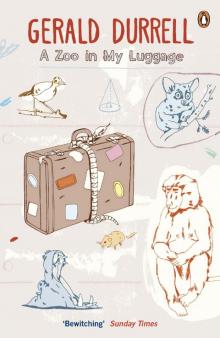 A Zoo in My Luggage
A Zoo in My Luggage The New Noah
The New Noah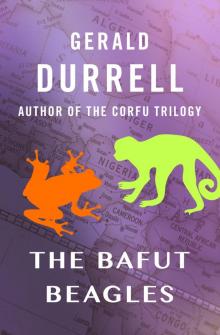 The Bafut Beagles
The Bafut Beagles Encounters With Animals
Encounters With Animals Catch Me a Colobus
Catch Me a Colobus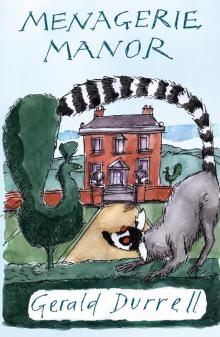 Menagerie Manor
Menagerie Manor The Picnic and Suchlike Pandemonium
The Picnic and Suchlike Pandemonium Ark on the Move
Ark on the Move My Family and Other Animals
My Family and Other Animals Two in the Bush (Bello)
Two in the Bush (Bello) The Stationary Ark
The Stationary Ark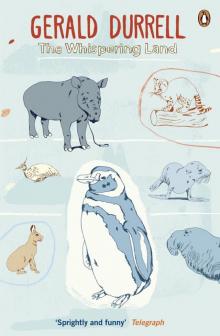 The Whispering Land
The Whispering Land Three Singles to Adventure
Three Singles to Adventure Fillets of Plaice
Fillets of Plaice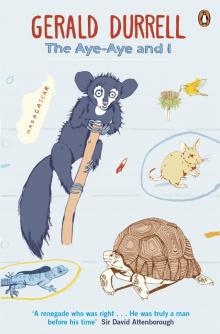 The Aye-Aye and I
The Aye-Aye and I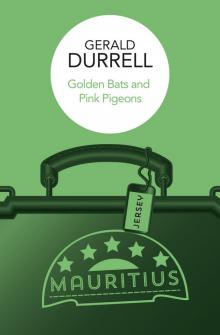 Golden Bats & Pink Pigeons
Golden Bats & Pink Pigeons The Drunken Forest
The Drunken Forest Marrying Off Mother: And Other Stories
Marrying Off Mother: And Other Stories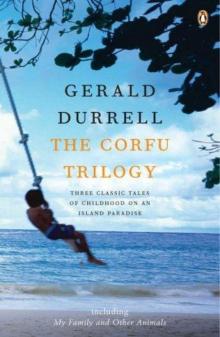 The Corfu Trilogy (the corfu trilogy)
The Corfu Trilogy (the corfu trilogy) The Corfu Trilogy
The Corfu Trilogy Marrying Off Mother
Marrying Off Mother Two in the Bush
Two in the Bush